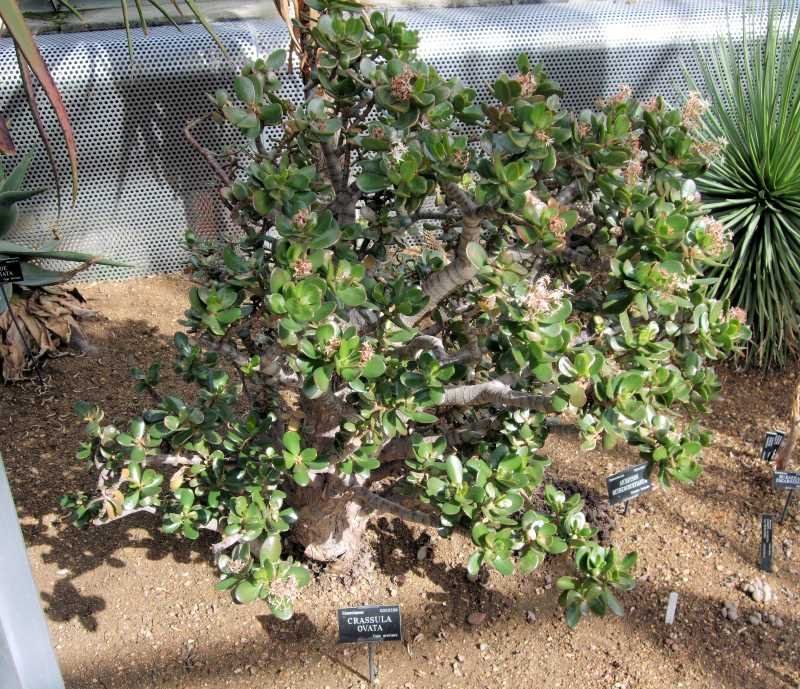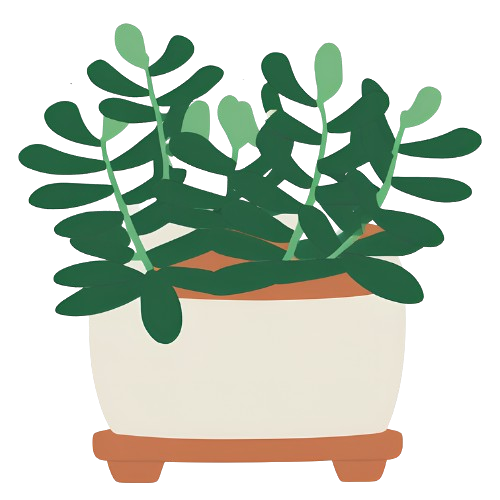Jade plants (Crassula ovata), also known as money plants or lucky plants, are beloved for their thick, succulent leaves and easy-going nature. These plants have long been a staple in both homes and offices due to their aesthetic appeal and reputation for bringing good fortune.
While jade plants are typically grown indoors, they can thrive outside if given the right conditions. This comprehensive guide will delve into the specifics of where to place your jade plant outside to ensure it flourishes, along with detailed information on care, benefits, and potential challenges.

Table of Contents
Understanding the Jade Plant
Before diving into the specifics of outdoor placement, it’s crucial to understand the jade plant’s origin, characteristics, and needs.
Origin and Characteristics
Jade plants are native to South Africa and Mozambique, where they grow in arid, rocky regions. They belong to the Crassulaceae family and are known for their resilience and longevity. These plants can live for several decades with proper care, making them a cherished addition to any garden or home.
Growth and Appearance
Jade plants typically grow to about 3-6 feet in height but can be pruned to maintain a smaller size. They have thick, woody stems and glossy, oval-shaped leaves that store water, making them drought-resistant. The leaves are usually a vibrant green, sometimes with red edges when exposed to sufficient sunlight.
Light and Water Requirements
As succulents, jade plants have specific light and water needs. They thrive in bright, indirect sunlight and require well-draining soil to prevent root rot. Watering should be done sparingly, allowing the soil to dry out between waterings.
Also Read: Can Jade Plants Survive Without Sunlight?
Benefits of Growing Jade Plants Outside
Growing jade plants outside offers several advantages over indoor cultivation:
- Enhanced Growth: Outdoor conditions, such as natural light and air circulation, can promote healthier and faster growth.
- Natural Habitat: Mimicking their natural environment can help jade plants thrive and become more robust.
- Aesthetic Appeal: Outdoor jade plants can enhance the beauty of your garden with their unique appearance.
- Reduced Pest Problems: Exposure to natural predators and beneficial insects can help control pests.
Where to Place Jade Plants Outside
Choosing the right location for your jade plant outside is crucial for its health and growth. Here are some detailed considerations:
Light Requirements
Jade plants require a balance of sunlight to thrive. Here’s how to ensure they get the right amount:
- Morning Sunlight: Place your jade plant in a spot where it receives morning sunlight. This gentle light is beneficial without being too harsh.
- Afternoon Shade: Ensure the plant gets shade during the intense afternoon heat to prevent leaf burn.
- Filtered Light: If you live in an extremely hot climate, consider placing the plant under a tree or a structure that provides filtered light.
Temperature Tolerance
Jade plants are tolerant of a wide range of temperatures but have their limits:
- Optimal Range: They thrive in temperatures between 65°F and 75°F (18°C to 24°C).
- Cold Sensitivity: Avoid placing them in areas where temperatures drop below 50°F (10°C) for extended periods. In colder climates, consider potting them so they can be moved indoors during winter.
Wind Protection
Strong winds can damage jade plants, causing them to lose leaves or break stems:
- Sheltered Spots: Place the plant in a location that offers protection from strong winds, such as near a wall or a sturdy fence.
- Natural Barriers: Utilize natural barriers like shrubs or other plants to shield the jade plant from gusts.
Soil and Drainage
Jade plants require well-draining soil to prevent root rot:
- Soil Type: Use a mix specifically designed for succulents and cacti. If planting in the ground, ensure the soil is sandy or gritty.
- Elevation: Plant jade plants in elevated garden beds or pots to enhance drainage and prevent waterlogging.
Humidity and Air Circulation
Jade plants prefer low to moderate humidity:
- Air Circulation: Ensure the location has good air circulation to reduce the risk of fungal infections.
- Humidity Control: Avoid overly humid areas, such as next to water features or densely planted areas.
Seasonal Considerations
The placement of your jade plant may need to change with the seasons:
- Spring and Summer: These are the growing seasons for jade plants. Ensure they receive ample sunlight and regular, but not excessive, watering.
- Autumn: Gradually reduce watering as the plant’s growth slows. Ensure it still receives sufficient sunlight.
- Winter: In regions with frost, move the plant indoors or to a sheltered location. If temperatures remain mild, reduce watering significantly.
Caring for Outdoor Jade Plants
Ensuring your jade plant receives the right care when placed outdoors is essential for its health and vitality. Below, we delve deeper into the specific care requirements to keep your jade plant thriving.
Watering
Watering is a critical aspect of jade plant care. While these succulents are drought-tolerant, improper watering can lead to issues such as root rot or dehydration.
Frequency
- Thorough Yet Infrequent Watering: Jade plants prefer to be watered thoroughly but less frequently. This means allowing the water to soak through the soil and reach the roots before allowing the soil to dry out completely.
- Seasonal Adjustments: During the spring and summer, the plant’s active growing seasons, water more frequently—typically once every 1-2 weeks. In the fall and winter, reduce watering to once a month or less, depending on the plant’s needs and the local climate.
Method
- Base Watering: Always water at the base of the plant rather than from above. This prevents water from sitting on the leaves, which can lead to rot and fungal issues.
- Avoid Waterlogging: Ensure excess water drains away freely. If the plant is in a pot, make sure the pot has drainage holes. If it’s in the ground, check that the soil drains well and doesn’t retain water.
Fertilizing
Jade plants benefit from occasional feeding to support their growth and health.
Type
- Balanced, Water-Soluble Fertilizer: Use a balanced fertilizer (such as 10-10-10) diluted to half strength to avoid over-fertilizing, which can harm the plant.
Frequency
- Growing Season: Fertilize once a month during the spring and summer when the plant is actively growing. This helps provide the nutrients needed for healthy growth and robust leaves.
- Dormant Season: Avoid fertilizing during the fall and winter as the plant’s growth slows and it requires fewer nutrients.
Pruning and Maintenance
Regular maintenance helps keep your jade plant healthy and attractive.
Pruning
- Shape and Size Control: Prune your jade plant to control its shape and size, removing any leggy or overgrown branches. This encourages a more compact and bushy growth habit.
- Remove Dead or Damaged Branches: Cut away any dead, damaged, or diseased branches to prevent the spread of disease and to improve the plant’s appearance.
Cleaning
- Remove Fallen Leaves: Regularly clear away fallen leaves from around the base of the plant to prevent pests and diseases.
- Wipe Leaves: Occasionally, gently wipe the leaves with a damp cloth to remove dust and keep them looking vibrant.
Pest Control
Outdoor jade plants can be susceptible to pests, but regular monitoring and natural remedies can keep them healthy.
Common Pests
- Mealybugs: These small, white, cotton-like insects often cluster in leaf joints and can be removed with a cotton swab dipped in rubbing alcohol.
- Spider Mites: These tiny pests can cause stippling and yellowing of leaves. Use a strong spray of water to dislodge them or treat with neem oil.
- Scale: These hard-shelled insects attach to stems and leaves. Remove them manually with a soft brush or treat with insecticidal soap.
Natural Solutions
- Neem Oil: A natural pesticide that is effective against a variety of pests. Mix according to the instructions and spray on affected areas.
- Insecticidal Soap: Use a mild, plant-safe soap solution to treat infestations. Spray thoroughly, covering all parts of the plant.
Common Challenges and Solutions
Even with the best care, jade plants can encounter problems. Identifying and addressing these issues promptly is key to maintaining a healthy plant.
Leaf Drop
Leaf drop is a common issue that can result from several factors:
Causes
- Overwatering: Excessive moisture can cause leaves to swell and fall off.
- Underwatering: Conversely, insufficient water can lead to dehydration and leaf drop.
- Sudden Temperature Changes: Drastic shifts in temperature, such as moving the plant from indoors to outdoors without acclimatization, can stress the plant and cause leaf drop.
Solution
- Adjust Watering Practices: Ensure the plant is watered thoroughly but infrequently, allowing the soil to dry out between waterings.
- Stable Environment: Gradually acclimate the plant to outdoor conditions to prevent shock. Protect the plant from sudden temperature changes by placing it in a sheltered location.
Leaf Burn
Leaf burn occurs when the plant receives too much direct sunlight, especially during the hottest part of the day.
Causes
- Excessive Direct Sunlight: Prolonged exposure to intense sunlight can scorch the leaves, causing them to turn brown or red and eventually fall off.
Solution
- Filtered or Partial Sunlight: Move the plant to a location where it receives morning sunlight and afternoon shade. Alternatively, use a shade cloth to filter the sunlight during peak hours.
Root Rot
Root rot is a serious condition caused by overwatering and poor drainage.
Causes
- Poor Drainage: Soil that retains too much water or pots without drainage holes can lead to soggy conditions that promote root rot.
- Excessive Watering: Frequent watering without allowing the soil to dry out can also cause root rot.
Solution
- Well-Draining Soil: Use a cactus or succulent mix that allows water to drain quickly. If planting in the ground, amend the soil with sand or perlite to improve drainage.
- Proper Watering: Water the plant only when the soil is completely dry. Ensure excess water can drain away freely.
Pests and Diseases
While jade plants are relatively resistant to pests and diseases, they can occasionally suffer from infestations or infections.
Causes
- Pest Infestations: Common pests like mealybugs, spider mites, and scale can damage the plant by feeding on its sap.
- Fungal Infections: Poor air circulation and high humidity can lead to fungal infections.
Solution
- Regular Monitoring: Inspect your plant regularly for signs of pests or disease. Early detection makes treatment easier.
- Natural Pesticides: Use neem oil or insecticidal soap to treat pest infestations. Ensure good air circulation to prevent fungal infections.
Related FAQs:
1. What is the best location to place a jade plant outside?
The best location for a jade plant outside is where it can receive bright, indirect sunlight for most of the day. Ideally, place it in a spot that gets morning sunlight and afternoon shade to protect it from the intense midday heat. A location with filtered light, such as under a tree or near a structure that provides partial shade, is also beneficial.
2. Can jade plants tolerate full sun outdoors?
While jade plants can tolerate some direct sunlight, too much full sun, especially during the hottest part of the day, can cause leaf burn. It’s best to provide them with morning sun and afternoon shade. If you live in a particularly hot climate, filtered light or partial shade throughout the day is preferable.
3. How do I protect my jade plant from extreme weather conditions?
- Heat: Provide shade during the hottest part of the day to prevent leaf burn.
- Cold: Move the plant indoors or to a sheltered location if temperatures drop below 50°F (10°C). Use frost cloths or covers if unexpected cold snaps occur.
- Wind: Place the plant in a sheltered spot, such as near a wall or a sturdy fence, to protect it from strong winds.
4. What type of soil is best for jade plants outdoors?
Jade plants thrive in well-draining soil. Use a cactus or succulent mix, or amend garden soil with sand or perlite to improve drainage. Avoid heavy, clay soils that retain too much moisture, as this can lead to root rot.
5. Can jade plants be grown in pots outside?
Yes, jade plants can be grown in pots outside. This offers the advantage of being able to move the plant as needed to protect it from extreme weather. Ensure the pot has drainage holes to prevent waterlogging and use a well-draining soil mix.
6. How often should I water my outdoor jade plant?
Water the jade plant thoroughly but infrequently. Allow the soil to dry out completely between waterings. During the growing season (spring and summer), water once every 1-2 weeks. Reduce watering in the fall and winter to once a month or less, depending on the local climate and rainfall.
7. Do jade plants need fertilizer when placed outside?
Yes, jade plants can benefit from occasional fertilizing. Use a balanced, water-soluble fertilizer diluted to half strength once a month during the growing season (spring and summer). Avoid fertilizing in the fall and winter when the plant’s growth slows down.
8. What are the signs that my jade plant is not getting enough light?
Signs that your jade plant is not getting enough light include:
- Leggy or elongated growth
- Pale or yellowing leaves
- Slow growth Move the plant to a brighter location with more indirect sunlight to address these issues.
9. How do I acclimate my indoor jade plant to outdoor conditions?
Gradually acclimate your jade plant to outdoor conditions to prevent shock:
- Start by placing the plant outside in a shaded area for a few hours each day.
- Gradually increase the amount of time it spends outside over a period of 1-2 weeks.
- Slowly introduce it to more sunlight, starting with morning sun and eventually moving to its final outdoor location.
10. What should I do if my jade plant’s leaves start to burn from too much sun?
If your jade plant’s leaves show signs of sunburn (brown, crispy edges), move it to a shadier location immediately. Prune any severely damaged leaves to encourage new growth. Ensure the plant receives bright, indirect light rather than direct, intense sunlight.
Conclusion
Caring for outdoor jade plants involves understanding their unique needs and addressing potential challenges proactively. By providing the right conditions, such as proper light, well-draining soil, and protection from extreme weather, you can ensure your jade plant thrives in its outdoor environment. Regular maintenance, including watering, fertilizing, pruning, and pest control, will keep your plant healthy and beautiful. With attentive care, your outdoor jade plant can flourish and bring natural beauty to your garden for many years.

My name is Shahriar Robin, and I’m the creator of JadePlants.org. Growing up in a village, I developed a deep connection with nature from a young age. Plants and gardening have always been a part of my life, and jade plants, with their resilience and elegance, have held a special place in my heart. Over the years, I’ve learned so much about these fascinating plants, and I created this site to share that knowledge with you—completely free of charge.
